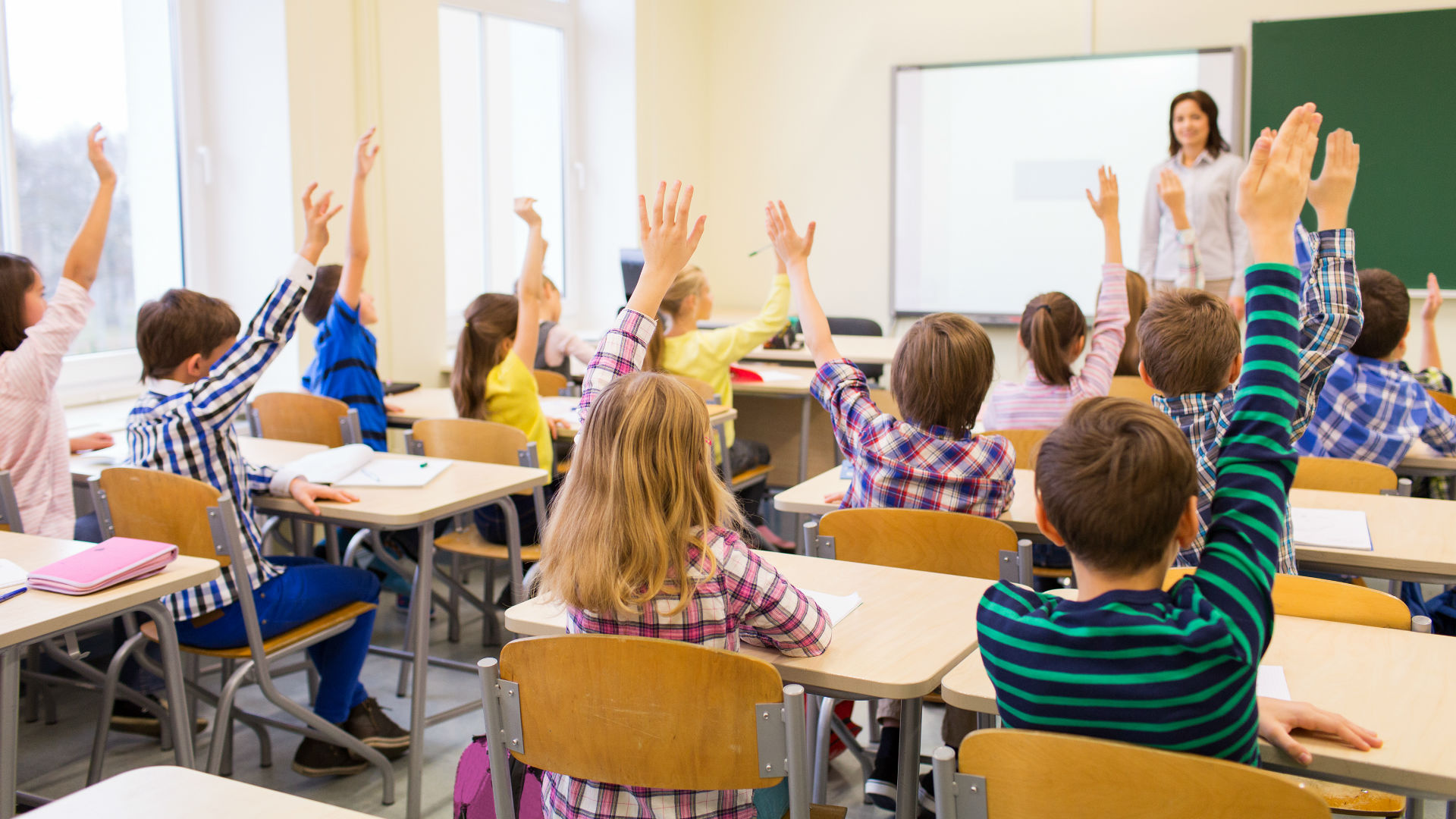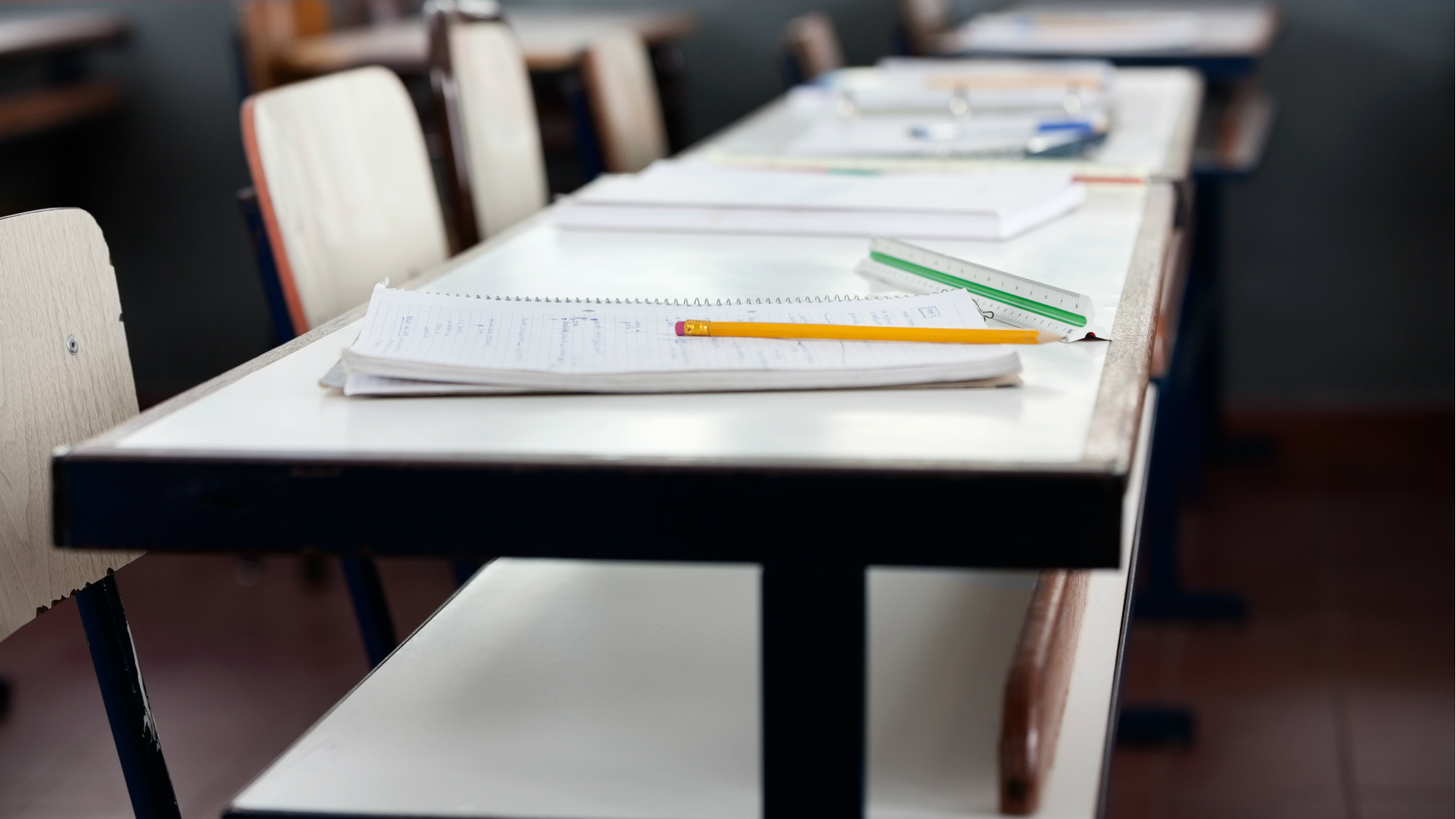The psychology of education
How can teachers and students get the most out of the modern-day classroom?

Like any environment, the school classroom needs to be an open and inclusive place in order to thrive. Making sure students are alert, engaged and ready to learn is a big challenge faced by teachers, particularly in a world where a child can hold instant distractions, be it through mobile devices, games or social media, in the palm of their hand.
According to data from OECD (Organisation for Economic Co-operation and Development), children in the UK spend 635 hours per year in primary education, while those at lower and upper secondary levels are in school for 714 hours per year. That's a lot of time to meld young minds, meaning the onus is on schools to create a productive venue for their students to learn.
The design of the school classroom has changed little since education first became compulsory in the 19th century expect to see tables and chairs arranged to face a teacher's desk and blackboard (or these days, more commonly, a whiteboard). With all eyes trained to the front of the room, the teacher is the consistent focal point of any lesson. Though the wellbeing of students plays a significant part in successful education, teachers need to be content and in the correct frame of mind to inspire and engage their class, too.
Dr Joanna Mitchell, educational psychologist and managing director at Orange Psychology, describes teaching and learning as a "reciprocal process".
"Engagement of both parties is vital for it to be successful," she says. "The best classrooms for me are obvious when a teacher knows when to extend children's learning and when to consolidate it, and a teacher has to be engaged wholeheartedly for this thinking to occur."
Think of it as a cyclical effect: a happy and motivated teacher can lead to receptive students and a positive learning experience, which in turn will make teachers feel fulfilled. That's the ideal scenario, but naturally schools can be complex and ever-shifting environments shaped by multiple factors.
"I have very high levels of empathy for teachers, because I know the stresses and pressures they are under," Mitchell adds. "It is important for school support systems to be in place to ensure teachers are in the best place emotionally to be able to do their best in the classrooms. The success of any teacher should not be seen in isolation of the wider school system."
The keys to classroom success
A 2016 report from SMART Technologies on the interconnection between teaching, technology and learning breaks down several success measures' in research to determine positive student outcomes. Though visible learning, preparation for standardised tests and SEL (social and emotional learning) are all prominent factors, the findings also underline the importance of the classroom environment.

According to the study, these factors include getting every student to participate, creating a space where they all feel safe to contribute and fostering peer discussion.
Mitchell, who has observed many classrooms and many teachers of varying skills and confidence, believes the key lies in the interaction between teachers and pupils. For her, there are three crucial ingredients that need to be in place in every classroom...
- 1. Relationship (teachers who know their pupils): "Children need to feel understood and will work with teachers who take an interest in them. Developing relationships takes time, but ultimately leads to improved engagement in my experience."
- 2. Questions (teachers who ask their students the right questions): "It takes real skill to know which questions to ask in order to help children learn. Starting from what the child understands, and building questions from there takes longer to think about, but ultimately leads to improved learning."
- 3. Modelling (teachers who show their pupils): "Classrooms where there is high level of modelling and facilitation tend to show more children on task and engaged with learning."
Where does technology sit?
Mitchell's third point is particularly resonant when it comes to the modern-day classroom. The majority of students use devices to consume content in their personal lives, yet SMART's study shows that creating content encourages them to collaborate with their peers and teachers and produces better results.
Schools are increasingly making use of technology, with 70% of all primary and secondary schools in the UK using tablet computers to deliver learning material, and over 10% in the position to offer one tablet per pupil. Add to that the adoption of bring your own device' policies, allowing students to use their own smartphones or tablets in lessons, and you get a sense of how schools are moving to keep up with technology.
Companies such as SMART Technologies are at the heart of this digital transformation, providing interactive displays to facilitate learning. The SMART Board 7000 series, for instance, allows teachers and students to engage with activities using pens or their fingertips, just as you would on a traditional whiteboard. It's also device agnostic, meaning Windows, Android and iOS tech can connect to the board and let students participate from their desks.
"We overestimate the power of verbal or auditory methods of learning in my view, and teachers who utilise a variety of physical and visual methods to demonstrate learning strategies, particularly in an increasingly digital age, get better engagement and behaviour," says Mitchell.
See more SMART Technologies customer stories here
One school that has seen positive results from a SMART overhaul is Benhurst Primary in Essex. Head teacher David Denchfield says that the school was in desperate need of upgrading when he arrived five years ago.
"We had blackboards and whiteboards and we had overhead projectors. It was useful, but it wasn't the tool to move learning forward and actually it was quite uninspiring," he says, adding: "We invested a lot of time and money researching a range of different ICT providers, and we felt that SMART was the right fit for our school."
Now every classroom has a SMART interactive display and SMART Learning Suite software, something Denchfield believes has made a significant difference.
"We have a number of children, three or four years ago, we weren't able to get them to come out of their shell," he says. "What we found with technology, and in particular if I take SMART as an example, the children have suddenly found a voice. Children are already inspired. They come to school with a love of learning, a love of life. Our job is to continue that journey."
It should be noted that technology in isolation isn't education's magic bullet. A 2015 report from OECD stated that educational technology needs to work in tandem with good teaching in order to improve learning results. Without the latter, the former is almost redundant and you may as well be teaching the old-fashioned way. However, the report concluded that the "fusion of great teaching practice with technology-rich environments results in much higher reporting of success".
This further highlights just how important it is for teachers to be in the correct mindset to get the most out of the modern classroom. Technology used in the right way, and backed by an awareness of pupils' needs, will lead to a better experience all round.
SMART Technologies is transforming education discover more here.
Sign up today and you will receive a free copy of our Future Focus 2025 report - the leading guidance on AI, cybersecurity and other IT challenges as per 700+ senior executives
ITPro is a global business technology website providing the latest news, analysis, and business insight for IT decision-makers. Whether it's cyber security, cloud computing, IT infrastructure, or business strategy, we aim to equip leaders with the data they need to make informed IT investments.
For regular updates delivered to your inbox and social feeds, be sure to sign up to our daily newsletter and follow on us LinkedIn and Twitter.
-
 How the UK public sector could benefit from strategic channel partnerships
How the UK public sector could benefit from strategic channel partnershipsIndustry Insights Is the channel the answer to the growing cost vs budget problem facing the public sector?
-
 Microsoft wants to replace C and C++ with Rust by 2030
Microsoft wants to replace C and C++ with Rust by 2030News Windows won’t be rewritten in Rust using AI, according to a senior Microsoft engineer, but the company still has bold plans for embracing the popular programming language

